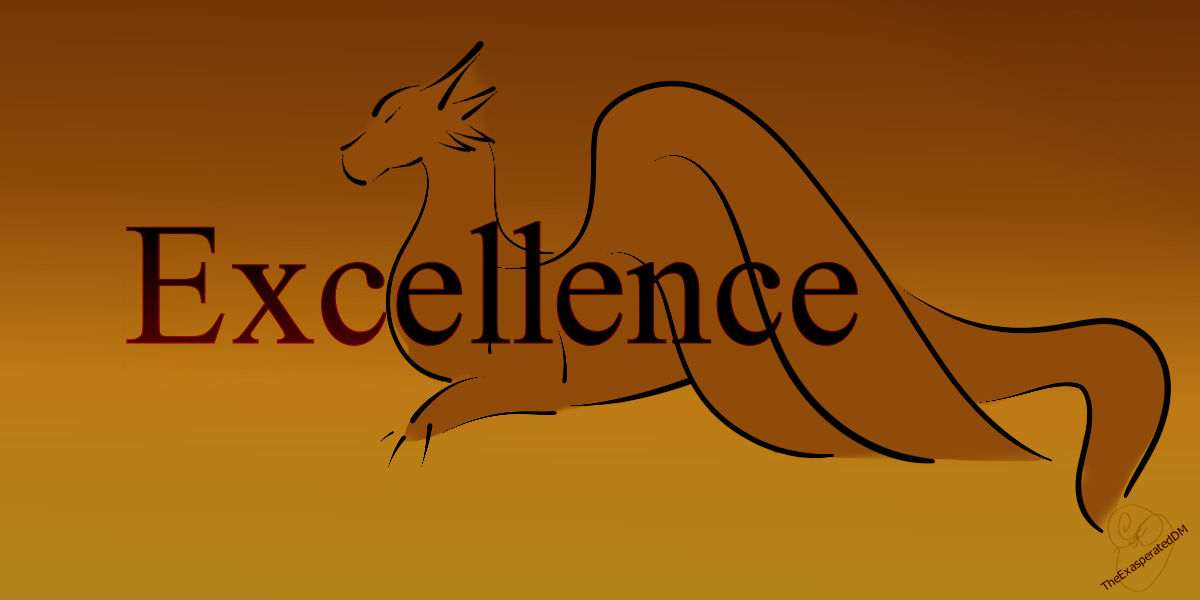Tiefling
Tieflings of this world come in a variety of shapes, thus knowing who is a tiefling is the same as knowing what one's backside looks like. It takes knowledge of the Infernal to learn if one is a tiefling. Infernal script, or markings, can be found on a tiefling denoting their cursed lineage. These markings are the remains from Dark Era dealings.
Basic Information
Biological Traits
Horns, tails, different feet, and body shape are the basic signifiers of possible infernal descent. Secondary traits; unusual eyes, skin color, skin type and 'accessories.' It can be difficult for one to know if someone has infernal descent as the basic signifiers are present in draconic and fey descent. Even pairing the secondary traits can still be difficult for aasimars and fey can present these. While difficult, it is not impossible to determine if infernal descent is present.
Infernal horns can come in a variety of shapes, however, draconic horns are unique to each subspecies. Such as the Blue Dragon, the descents can have a single horn and/or horns split into a 'v' shape with a frill spanning the gap used to protect the ear. This knowledge can be used to identify if one has infernal heritage instead of draconic.
Tails can be more complex to identify if any other species with a tail had a child with an infernal fiend. Some species of infernal fiends have unique tails just as dragons have unique horns. An incubus and succubus possess simple bare tails with a pointed spade-like end. Descents of incubus, or succubus, will present this tail type but lack the ability to use shape-changing powers of their infernal lineage.
Many more comparisons can be made to other species. Knowledge about infernal descent can be useful when interacting with someone, who possesses it, or finding out what deals were made in the past that affect the person with the heritage. Information about infernal descent is available at libraries, while information about deals will have to be contracted from a fiend.
Civilization and Culture
Naming Traditions
Tiefling names fall into three broad categories. Tieflings born into another culture typically have names reflective of that culture. Some have names derived from the Infernal language, passed down through generations, that reflect their fiendish heritage. And some younger tieflings, striving to find a place in the world, adopt a name that signifies a virtue or other concept and then try to embody that concept. For some, the chosen name is a noble quest. For others, it’s a grim destiny.
Male Infernal Names: Akmenos, Amnon, Barakas, Damakos, Ekemon, Iados, Kairon, Leucis, Melech, Mordai, Morthos, Pelaios, Skamos, Therai
Female Infernal Names: Akta, Anakis, Bryseis, Criella, Damaia, Ea, Kallista, Lerissa, Makaria, Nemeia, Orianna, Phelaia, Rieta
“Virtue” Names: Art, Carrion, Chant, Creed, Despair, Excellence, Fear, Glory, Hope, Ideal, Music, Nowhere, Open, Poetry, Quest, Random, Reverence, Sorrow, Temerity, Torment, Weary
Body Tint, Colouring and Marking
Markings denoting infernal heritage can vary as being common to rare depending on society's integration of fiends. The practice was common during the Dark Era, because it was believed to give the marked more power. This was a fallacy. These markers serve the main purpose of public notice for the fiend to gain more deals by the marked showing powers. As the fiend gained more deals, those with marks could gain a small power boost if the fiend willed it.
Now, the people can be required to wear a mark, or symbol, as apart of their contract. A mark has no other use unless it is written in a contract. A power can be attached to the mark, which can included; summon the contact in physical form, summon another item, a spell, or small denomination of coin. It is to be noted that with any boon comes a price when dealing with a fiend.
Possible Fiend/Devil/Demon Parent
( Mating Rates; Top to Bottom : Common to Unique; Survival Rate )- Very Common : Succubus/Incubus, Erinye, Arrow Demon, Rakshasa
- Common : Cornugon / Horned, Spinagon / Spined, Hamatula / Barbed
- Uncommon : Osyluth/ Bone, Fimbrul, Seared devil, Tar devil
- Rare : Chain, Nalfeshnee, Bar-lguras
- Very Rare : Pit fiend, Glabrezu, Marilith
- Unique : Balor, Babau



Comments